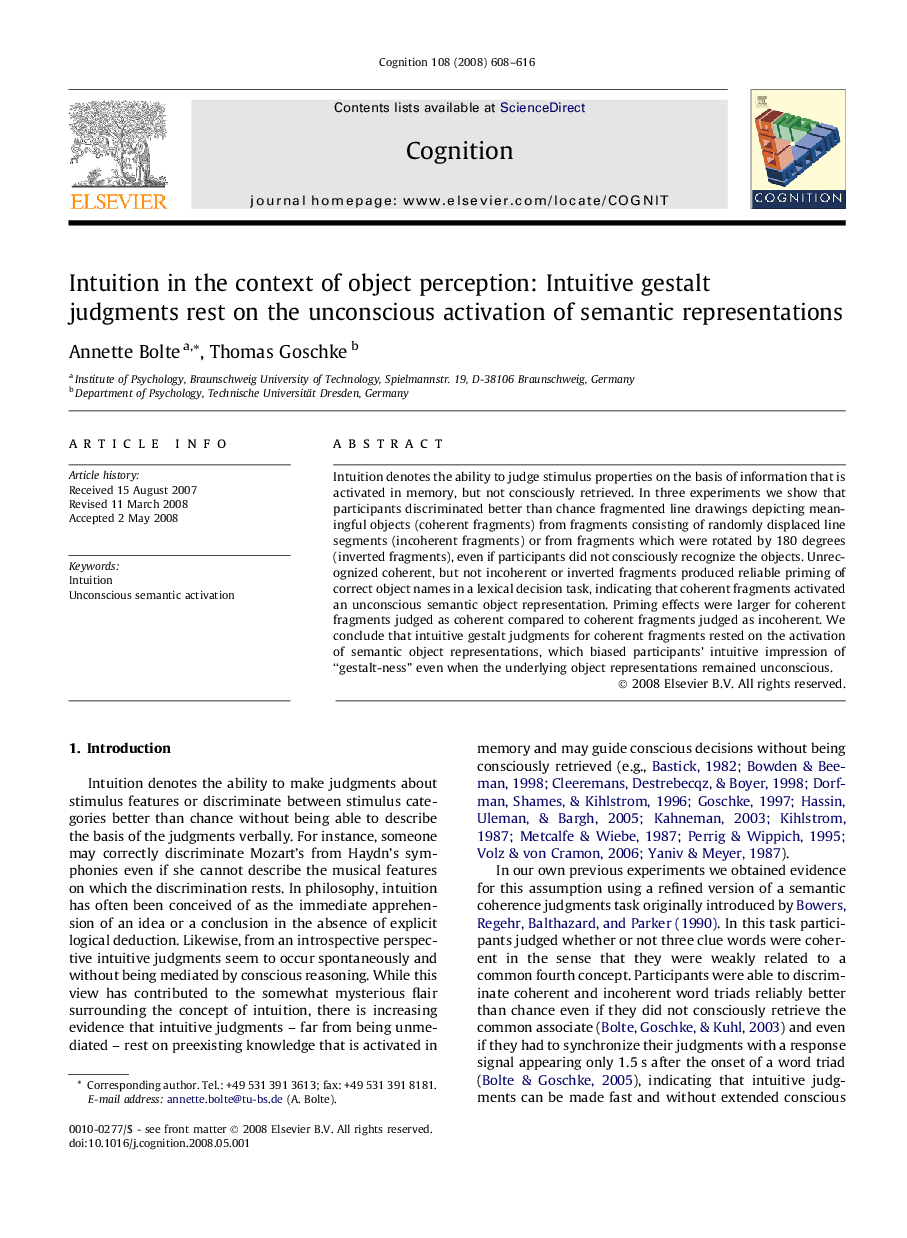| Article ID | Journal | Published Year | Pages | File Type |
|---|---|---|---|---|
| 927302 | Cognition | 2008 | 9 Pages |
Intuition denotes the ability to judge stimulus properties on the basis of information that is activated in memory, but not consciously retrieved. In three experiments we show that participants discriminated better than chance fragmented line drawings depicting meaningful objects (coherent fragments) from fragments consisting of randomly displaced line segments (incoherent fragments) or from fragments which were rotated by 180 degrees (inverted fragments), even if participants did not consciously recognize the objects. Unrecognized coherent, but not incoherent or inverted fragments produced reliable priming of correct object names in a lexical decision task, indicating that coherent fragments activated an unconscious semantic object representation. Priming effects were larger for coherent fragments judged as coherent compared to coherent fragments judged as incoherent. We conclude that intuitive gestalt judgments for coherent fragments rested on the activation of semantic object representations, which biased participants’ intuitive impression of “gestalt-ness” even when the underlying object representations remained unconscious.
